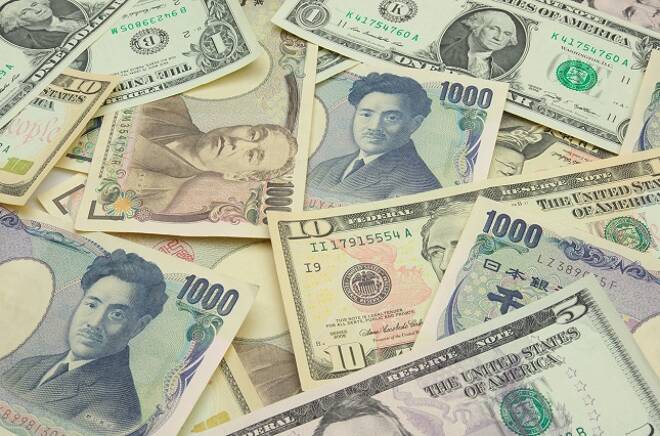Advertisement
Advertisement
Strong U.S. Economic Data Weighs on Aussie, Kiwi & Yen
By:
The Aussie and Kiwi were also underpinned by the inking of the trade deal, but domestic economic concerns limited gains as well as increasing chances of central bank rate cuts. Demand for higher-yielding assets drove the Japanese Yen lower.
Better-than-expected economic data drove the U.S. Dollar higher last week against the Australian and New Zealand Dollars, and the Japanese Yen. The dollar was boosted by better-than-expected U.S. economic data. Optimism over improving global economic growth with the signing of the trade deal between the United States and China also underpinned the greenback.
The Aussie and Kiwi were also underpinned by the inking of the trade deal, but domestic economic concerns limited gains as well as increasing chances of central bank rate cuts. Demand for higher-yielding assets drove the Japanese Yen lower.
U.S. Dollar
President Trump signed a “phase one” trade agreement with China as the world’s two biggest economies try to rein in a more than 18-month trade war.
The deal includes provisions to root out intellectual property theft and forced technology transfers and increase Chinese purchases of U.S. goods, though it leaves open questions about enforcement.
Additionally, the Trump administration aims to start negotiating the next piece of the trade agreement before the November 2020 election.
Consumer prices rose slightly less than expected in December and monthly underlying inflation pressures retreated, which could allow the Federal Reserve to keep interest rates unchanged throughout this year.
The U.S. Labor Department also reported its producer price index for final demand ticked up 0.1% last month after being unchanged in November.
Weekly jobless claims unexpectedly dropped by 10,000 to 204,000. Economists polled by Reuters expected a print of 216,000. Meanwhile, retail sales climbed by 0.3% in December, matching expectations. The Philadelphia Federal Reserve business index also jumped to 17 in January from 2.4 in December.
Finally, U.S. housing starts soared nearly 17% in December to a 13-year high, according to a Friday release from the Census Bureau.
Australian Dollar
There were no major economic releases in Australia last week, but traders continued to express concerns over the impact of the massive bushfires on the economy. Because of the damage to the economy especially the tourism industry, some traders are starting to price in a rate cut by the Reserve Bank in February.
The Aussie was also influenced by economic news from China. China’s dollar-denominated imports from the U.S. rebounded in November and December, Reuters reported citing data from China’s customs released on January 14. It was the first time that its exports went up since March last year.
In December China’s trade surplus with the U.S. was $23.18 billion – down from $24.6 billion in November.
China’s GDP numbers which came in on Friday largely met analyst expectations. It announced its economy grew by 6.1% in 2019, meeting expectations even amid a trade dispute with the U.S. Its GDP grew 6.0% on-year in the fourth quarter of 2019.
That’s unchanged from the pace in the third quarter, which was believed to be its slowest GDP gain in at least 27 ½ years.
The AUD/USD finished the week at .6872, down 0.0028 or -0.40%.
New Zealand Dollar
New Zealand business sentiment improved starkly in the last three months of 2019 from the decade-low hit the previous quarter, a private think tank said on Tuesday.
A net 21% of firms surveyed expected general business conditions to deteriorate compared with 40% – the worst reading since March 2009 – in the previous quarter, the New Zealand Institute of Economic Research’s (NZIER) quarterly survey of business opinion (QSBO) showed.
The NZD/USD settled at .6611, down 0.0025 or -0.37%.
Japanese Yen
The Japanese Yen hit a multi-month low last week, fueled by increased demand for higher-yielding assets, which made the safe-haven currency a less-desirable investment. Better-than-expected U.S. economic data also drive U.S. interest rates higher, widening the spread between U.S. Government bond and Japanese Government bond yields.
The Bank of Japan was in the news last week ahead of this week’s BOJ interest rate and policy decisions
The Bank of Japan cut its economic assessment for three of the country’s nine regions on Wednesday but remained cautiously optimistic that domestic demand could help offset a slowdown in exports and manufacturing.
Also on Wednesday, Governor Haruhiko Kuroda held to the BOJ’s view that the Japanese economy will see moderate growth despite weak exports and output, hit by the global slowdown and natural disasters at home.
On Thursday, Reuters reported the Bank of Japan is expected to keep monetary policy steady this week and nudge up its economic growth forecast, as the U.S.-China trade deal and de-escalation in Middle East tensions take some pressure off the central bank for more stimulus.
Last week, the USD/JPY settled at 110.170, up 0.663 or +0.61%
Related Articles
About the Author
James Hyerczykauthor
James is a Florida-based technical analyst, market researcher, educator and trader with 35+ years of experience. He is an expert in the area of patterns, price and time analysis as it applies to futures, Forex, and stocks.
Latest news and analysis
Advertisement
